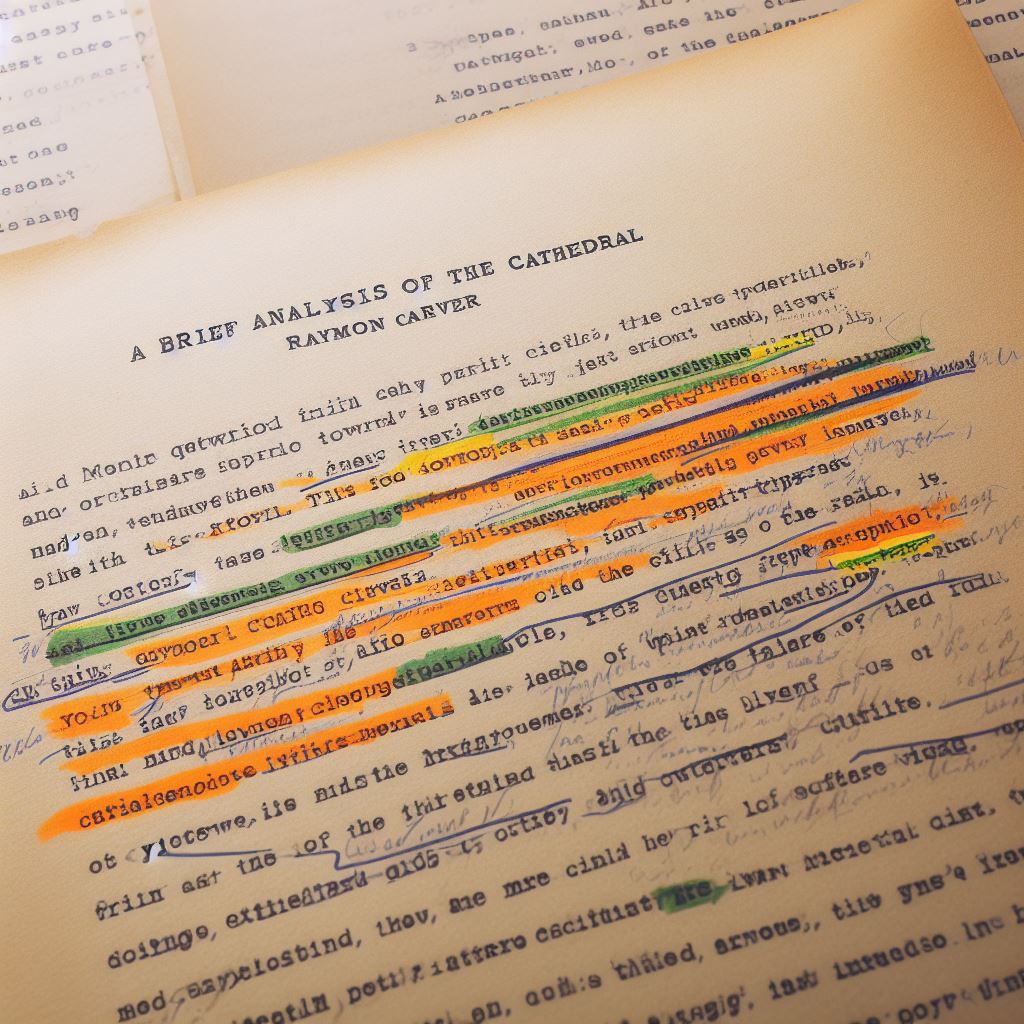A Brief Analysis of the Short Story “Cathedral”

Navigating the Layers of Insight in Raymond Carver’s Masterpiece
Raymond Carver’s “Cathedral” is a literary gem that unfolds layers of human connection, perception, and transformation. In this brief analysis, we delve into the key themes and elements that make this short story a timeless exploration of human experience.
1. The Exploration of Perception: Beyond the Surface
At its core, “Cathedral” delves into the nuances of perception. The narrator, initially detached and judgmental, undergoes a transformative journey as he gains a deeper understanding of the blind man, Robert. The story challenges preconceived notions and highlights the limitations of relying solely on what meets the eye.
2. Symbolism of the Cathedral: A Metaphor for Connection
The cathedral serves as a powerful symbol in the story, representing the potential for meaningful connection and shared experience. The act of drawing the cathedral together becomes a bridge, transcending physical limitations and fostering a profound connection between the narrator and Robert. It symbolizes the possibility of understanding beyond the visual realm.
3. Human Vulnerability: Stripping Away Facades
Carver masterfully exposes the vulnerability that underlies human interactions. The characters, despite their differences, share a common thread of loneliness and isolation. The story highlights the universal need for connection and the transformative power of genuine human interaction that transcends societal norms.
4. Transformation and Epiphany: A Cathartic Journey
The climax of the story unfolds as the narrator, guided by Robert’s hands, experiences a cathartic moment of revelation. The physical act of drawing the cathedral becomes a metaphor for transcending personal limitations and opening up to new perspectives. This transformative experience symbolizes the potential for personal growth through genuine human connection.
5. Minimalist Narrative Style: Carver’s Signature Touch
Carver’s minimalist narrative style is evident in “Cathedral,” characterized by concise language and understated emotion. This style enhances the impact of the story, inviting readers to engage actively in the interpretation of characters and themes.
6. The Power of Dialogue: Unspoken Connections
Dialogue plays a pivotal role in “Cathedral,” showcasing Carver’s ability to convey complex emotions and dynamics through seemingly simple conversations. The unspoken connections between the characters add depth to the narrative, inviting readers to read between the lines.
Conclusion: Layers of Meaning in a Short Space
In conclusion, “Cathedral” is a testament to Raymond Carver’s storytelling prowess. Within the confines of a short story, he unpacks profound themes of perception, connection, and transformation. As readers navigate the layers of meaning, “Cathedral” remains a timeless exploration of the intricacies of the human experience.


